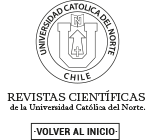Maxwell revisited
DOI:
https://doi.org/10.4067/S0716-09172007000100006Abstract
This work explores what other mathematical possibilities were available to Maxwell for formulating his electromagnetic field model, by characterizing the family of mathematical models induced by the analytical equations describing electromagnetic phenomena prevailing at that time. The need for this research stems from the article “Inertial Relativity — A Functional Analysis Review”, recently published in “Proyecciones”, which claims and demonstrates the existence of an axiomatic conflict between the special and general theories of relativity on one side, and functional analysis on the other, making the reformulation of the relativistic theories, mandatory. As will be shown herein, such reformulation calls for a revision of Maxwell’s electromagnetic field model. The conclusion is reached that —given the set of equations considered by Maxwell— not a unique, but an infinite number of mathematically correct reformulations to Ampèrés law exists, resulting in an equally abundant number of potential models for the electromagnetic phenomena (including Maxwell’s). Further experimentation is required in order to determine which is the physically correct model.
References
2. Einstein, Albert. “Zur Elektrodynamik Bewegter K¨orper”, §3. Spanish translation by Fidel Alsina F. and Damián Canales F. of original paper published in Annalen der Physik 17, 891 (1905). “La Relatividad”, Emecé Editores, B. Aires, (1950).
3. Ibid. [6], §6.
4. Einstein, Albert. “Die Grundlage Der Allgemeinen Relativit¨atstheorie”, §2-4. Spanish translation by Fidel Alsina F. and Damián Canales F. of original paper published in Annalen der Physik 49, 769 (1916). “La Relatividad”, Emecé Editores, B. Aires, (1950).
5. Maxwell, James. “A Dynamical Theory of the Electromagnetic Field”. Edition by T. Torrance of original paper published in Philosophical Transactions of the Royal Society of London 155, 459-512 (1865). Wipf & Stock Publications, Eugene, OR, (1996).
6. Hertz, Heinrich. “Untersuchungen ¨uber die Ausbreitung der Elektrischen Kraft”, English translation by D.E. Jones of Hertz’ 1982 collection of publications in Wiedemann’s Annalen. “Electric Waves”, Macmillan and Co., London, (1893).
7. Ibid. [5] (3.34) pp 49.
8. Maxwell, James. “A Treatise on Electricity and Magnetism”. Oxford, at the Clarendon Press, (1873).
9. Ampère, A.-M. “Sur la théorie mathématique des phénomènes électrodynamiques uniquement déduite de l’expérience”, Mém. Acad. R. Sci. Inst. France, ser.2, 6, pp. 175-388, (1827).
10. Neumann, F.E. “Allgemeine Gesetze der inducirten elektriche Ströme”, Abh. K. Akad. Wiss. Berlin, pp. 1-87, (1845).
11. Neumann, F.E. “Uber ein allgemeines Princip der mathematischen Theorie inducirter electricher Ströme”, Abh. K. Akad. Wiss. Berlin, pp. 1-72, (1847).
12. Weber, W. “I. Elektrodynamische Maassbestimmungen”, Ann. Phys. Chem. 73, pp. 193-240, 1848. (Shortened version of the 1846 paper published in Abh. K. Sächsischen Gesellschaft Wiss., Leipzig 1846).
13. Weber, W. Elektrodynamische Maassbestimmungen (Weidmann,
Leipzig). (A collection of seven papers, with the same main title but different subtitles, dating from 1846 to 1878. The first part, pp. 1-170, is from Abh. K. S¨achsischen Gesellschaft Wiss., Leipzig, 1846).
14. Helmholtz, H. “Ueber die Bewegungsgleichungen der Elektricität für ruhende leitende Körper”. J. Reine Angew. Math. 72, pp. 57-129, (1870).
15. Faddeev, L. D., Popov, V. N. “Feynman diagrams for the Yang-Mills fields”, Phys. Lett. B 25, pp. 29-30, (1967).
16. Schoenmaker, W., Magnus, W., Meuris, P., “Ghost fields in classical gauge theories”, Phys. Rev. Lett. 88 (18), (2002).
17. Lorentz, H. A. “La théorie électromagnétique de Maxwell et son application aux corps movants”. Arch. Néerl. Sc. 25, pp. 363-552, (1892).
18. Ibid. [8]; pp 231.
19. Ibid. [8]; pp 232.
20. Ibid. [8]; pp 229.
21. Boudenot, J.-C. “Ampère au coeur de la physique du début du XIXème siècle”. Repère: L’histoire de l’électricité. REE Revue de l’Electricité et de l’Electronique N ´ o 05, mai, (2003).
22. Thidé, Bo. “Electromagnetic Field Theory”, pp 6-10. Upsilon Books, Uppsala University, Sweden, (1997).
23. Fock, V. “Uber die invariante Form der Wellen- und der Bewegungs-gleichungen für einen geladenen Massenpunkt”, Z. Phys. 39, pp. 226-232, (1926).
24. Jackson, J. D., Okun, L. B. “Historical roots of gauge invariance”, Reviews of Modern Physics 73, pp. 663-680, (2001).
Published
How to Cite
Issue
Section
-
Attribution — You must give appropriate credit, provide a link to the license, and indicate if changes were made. You may do so in any reasonable manner, but not in any way that suggests the licensor endorses you or your use.
- No additional restrictions — You may not apply legal terms or technological measures that legally restrict others from doing anything the license permits.











